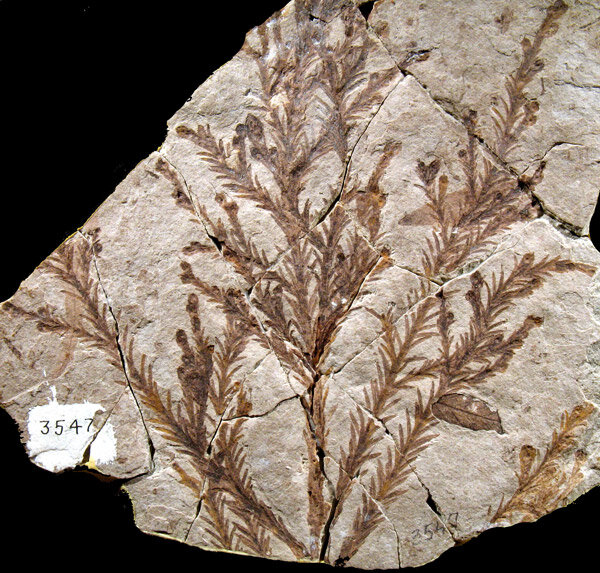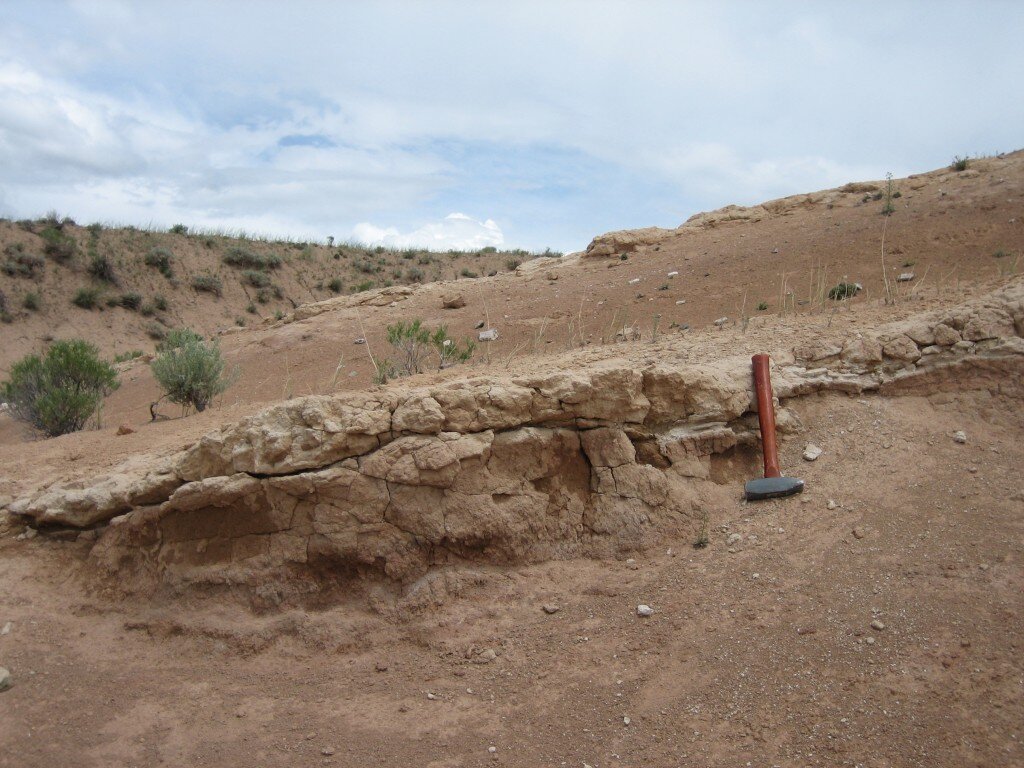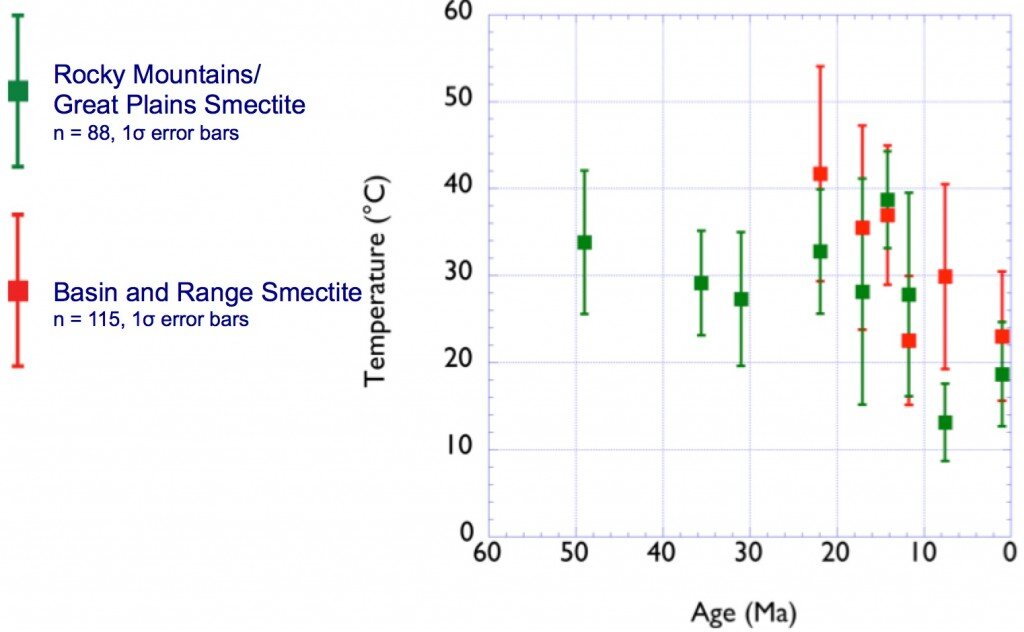What can clay tell us about the past?
How hot was it in Colorado yesterday? Ok, how about 20 million years ago? Hmm, that one seems trickier to answer. I recently took a stab at this and other questions in North American paleoclimate in the final chapter of my PhD, which has been accepted in Geochimica et Cosmochimica Acta, a leading geochemistry journal. I've been somewhat reluctant to write about this as it's not exactly the most accessible work I've done, plus I've been trying to run away from the last remaining scraps of my PhD in search of fresh research topics!Anyhow, here's a go at some of what I've been working on since 2008. Telling the conditions in the geologic past has always been challenging, but our foundation of knowledge has always been observational science. For many decades, paleontologists have studied fossils to determine information about ancient climate and environments. One metric involves analyzing the shapes of leaves, then using statistical models to determine things such as ancient temperature and rainfall. I belong to a community of scientists who use the chemistry of ancient sediments to learn about the past. Harold Urey's discovery of deuterium (hydrogen with an extra neutron) not only won him the Nobel Prize in 1934, but also gave birth to an entire field of stable isotope paleoclimatology. As it turns out, many natural processes preferentially take one isotope (forms of an element with different masses) over another in what is known as isotopic fractionation. For example, photosynthesis preferentially uses "light" carbon-12 in CO₂ over the heavier carbon-13. One of the best things from a climate standpoint, though, is that most isotopic fractionation is temperature dependent, meaning that we can calculate temperature if we know some more things about the system. Most famously, our best records of climate change over geologic timescales come from ancient fossils of tiny foraminifera buried in ocean sediments. The chemistry of their shells, made out of calcium carbonate, tells us about the temperature and amount of ice on the ancient earth.Here's where the clay comes in...clay minerals form as weathering products in soils. The clay forms in equilibrium with ancient water, and preserves the ancient isotopic signatures of oxygen and hydrogen, allowing us to study the ancient climate. I've been using the peculiar chemistry of smectite, a particular type of clay that weathered out of volcanic ash from enormous eruptions to tell the temperature history of western North America.
I belong to a community of scientists who use the chemistry of ancient sediments to learn about the past. Harold Urey's discovery of deuterium (hydrogen with an extra neutron) not only won him the Nobel Prize in 1934, but also gave birth to an entire field of stable isotope paleoclimatology. As it turns out, many natural processes preferentially take one isotope (forms of an element with different masses) over another in what is known as isotopic fractionation. For example, photosynthesis preferentially uses "light" carbon-12 in CO₂ over the heavier carbon-13. One of the best things from a climate standpoint, though, is that most isotopic fractionation is temperature dependent, meaning that we can calculate temperature if we know some more things about the system. Most famously, our best records of climate change over geologic timescales come from ancient fossils of tiny foraminifera buried in ocean sediments. The chemistry of their shells, made out of calcium carbonate, tells us about the temperature and amount of ice on the ancient earth.Here's where the clay comes in...clay minerals form as weathering products in soils. The clay forms in equilibrium with ancient water, and preserves the ancient isotopic signatures of oxygen and hydrogen, allowing us to study the ancient climate. I've been using the peculiar chemistry of smectite, a particular type of clay that weathered out of volcanic ash from enormous eruptions to tell the temperature history of western North America. My study involved collected hundreds of samples of weathered ash from all over western North America, with ages ranging from 620,000 years to about 30 million years. I separated the clay minerals using a centrifuge (read: lots of dishwashing!) and analyzed the oxygen and hydrogen isotope composition using mass spectrometry.
My study involved collected hundreds of samples of weathered ash from all over western North America, with ages ranging from 620,000 years to about 30 million years. I separated the clay minerals using a centrifuge (read: lots of dishwashing!) and analyzed the oxygen and hydrogen isotope composition using mass spectrometry. What do our results say? Well, quite a few things, but temperatures in North America follow global prevailing trends. It was quite a lot warmer (~10-15 degrees C) around 15 million years ago at a time known as the Middle Miocene Climatic Optimum. This was the most recent time of elevated global temperatures similar to where we may be headed by 2100 with modern climate change. If my results are any indication, continental interiors may warm to a greater degree than global averages.
What do our results say? Well, quite a few things, but temperatures in North America follow global prevailing trends. It was quite a lot warmer (~10-15 degrees C) around 15 million years ago at a time known as the Middle Miocene Climatic Optimum. This was the most recent time of elevated global temperatures similar to where we may be headed by 2100 with modern climate change. If my results are any indication, continental interiors may warm to a greater degree than global averages.